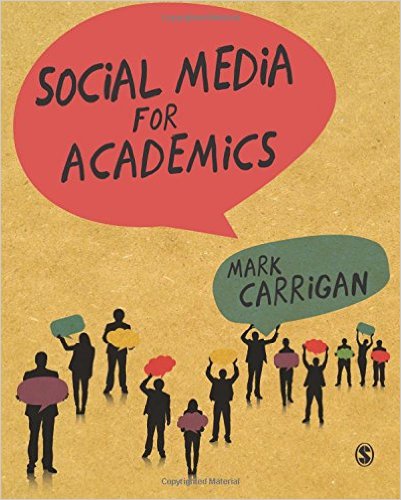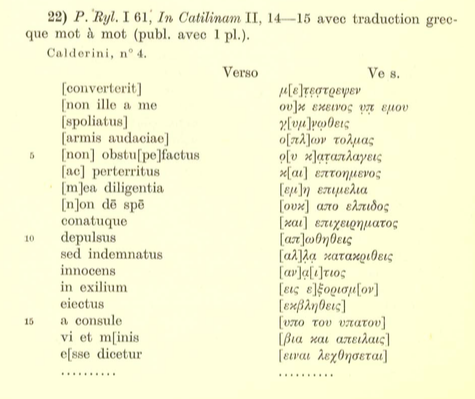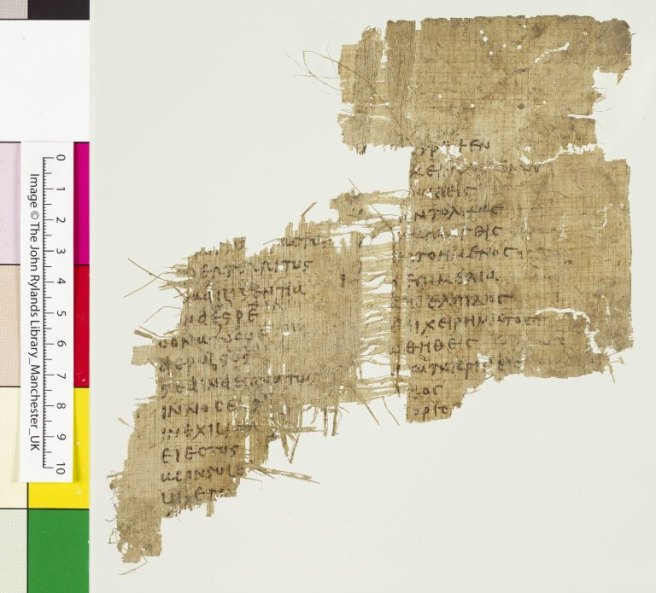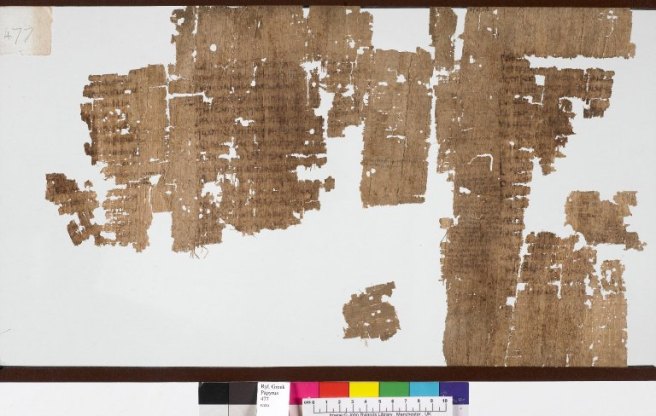During and after the Bomb Cyclone, view of the Boston Public Library, Copley Square. Photos by John Dugan (@sicsicsinefine).
For the last few years I’ve written about my experiences at the annual meeting of the Society for Classical Studies (2016, 2017). This year was different in many ways. For one thing, my involvement in a number of projects — Classics and Social Justice, putting together and moderating the final panel for the Ancient MakerSpaces workshop organized by Patrick Burns (@diyclassics) and David Ratzan (@papyrologus) where the panelists were: Sarah Bond (@sarahebond), Casey Dué (@caseyduehackney), Cora Sowa (minervaclassics.com), and Donna Zuckerberg (@donnazuck), the Ancient Books roundtable — meant that I was not able to livetweet as many panels as I usually do.
https://twitter.com/Seanpburrus/status/949734667065921538
More importantly, the fact that the Bomb Cyclone arrived in Boston on the main travel day for the SCS meant that many participants either got here late, or couldn’t get here at all. I mentioned at the time that this would make livetweeting even more important than ever; those who were supposed to be here could still see how their own work was being received, and interact with their audience, long range. For example, Amy Pistone (@apistone), who skyped in to the Classics and Social Justice Panel, was able to give her paper and see it tweeted and engage in the discussion online. Immediately before she skyped in she tweeted the handout to her presentation. Of course, I feel that livetweeting the SCS is always important, since it helps a broader range of people spend their intellectual time with us. At last year’s SCS in Toronto, I livetweeted the outreach panel, and the discussion from twitter was this: we’re here, we’re doing this kind of work. But the blizzard, I think, highlighted for many the true power of livetweeting. In a world where not all of can travel for these conferences, livetweeting lets us broaden our audience and the range of participants in our discussions.
One of the fundamental threads throughout the conference, from my perspective, was this idea: as a scholar you don’t have to go it alone anymore. This is a lesson that some in the digital humanities learned a long time ago. Casey Dué, speaking during the Homeric Multitext session of the #ancmakers workshop, and at the panel afterwards, hit home the collaborative nature of this kind of work: she runs the Homeric Multitext project with Mary Ebott, and Christopher Blackwell and Neel Smith are in charge of the technical aspects of the work. Dué mentioned at the panel that this collaboration was one of the real joys of her professional life. Looking at the “Collaborators” page, you can see that the network of scholars involved in this project is very large indeed. A project like this demands a number of different technical abilities, which in turn requires many individuals. Working together in the context of digital humanities means sharing different skill sets, different strengths, different areas of expertise. And the project itself is a solution to a very significant question in Classics: how do we deal with the oral composition of the Homeric epics and how they manifest in written form? The digital approach to answering this question came not out of an attempt to use digital tools but rather simply to find a way to answer the question. One of my favourite audience comments made during the #ancmakers panel was from Thomas Koentges (@ThomasKoentges), who said that if Wilamowitz were alive today he would be using the same tools as us, but he wouldn’t call himself a “digital” anything. At a certain point, as Sarah Bond said, what we now call “digital humanities” will simply be “humanities”. For many that is already basically the case. There are of course still die-hard sceptics. And Sarah Bond, asked what we can do in the face of this kind of scepticism replied: peer pressure. Those of us interested in this kind of work should still keep doing what we’re doing, and we should show the world (via twitter, blogs etc.) that we’re doing so. The panelists, asked how we can try to legitimize public scholarship, answered: include substantial, scholarly blog posts you write on your CV (Dué), use blog posts as part of your teaching (Zuckerberg), cite blogs you use in your bibliography (Bond), think of blogs as articles: pieces on Eidolon are articles (Zuckerberg).
One of the things which is always on my mind when it comes to digital humanities is the fact that I tend towards the humanities part rather than the digital. But one of the reasons that I think of myself in this way is because I have been following the path set for me of the scholar who works alone. Coming into the field with a philological training (in the broadest sense) seeded in me a kind of antagonism and territorialism that even now I have trouble letting go of. I’ve been thinking of myself as someone who has to “get there first”, have original research that came principally from my own creative and intellectual engine (accompanied by the correct citations and bibliography of course), and carve out a unique area for myself. And along the way that has made me competitive with, hostile towards, and afraid of other people’s ideas. This is not the way that the model of digital humanities operates. If you try to do everything yourself, you will come up against insurmountable obstacles. Daniel Libatique (@DLibatique10) and Ryan Pasco (@rympasco) said it best in this twitter thread, where they discussed the fact that their assumption that they had to do everything on their own in their digital projects was slowing them down, both practically and psychologically:
It seems to me that if we can bring the collaborative mindset of digital humanities into the more traditional area of classics, we’ll all benefit. Part of this will involve letting go of the sense of territorialism that I mentioned before. But those who are working on projects which are pedagogical or public facing are already making their knowledge and resources more openly accessible. I think, for example, of the speakers at the Classics and Social Justice panel organized by Jess Wright and Amit Shilo. Molly Harris spoke about the The Warrior Book Club, a group that reads stories of war from antiquity and modernity with combat veterans as well as civilians. While Harris was speaking she described the evolution of the group, her experiences doing this work, but also spent time giving her audience a detailed description of the resources that the project used. In essence, she was giving us a roadmap: are you interested in this kind of work? Well, here’s my bibliography (thread), and here are the texts which we read together: you could do the same.
https://twitter.com/opietasanimi/status/949294398940082181
This kind of collaborative spirit is also at the heart of the ancient books project organized by Stephanie Frampton (@saframpton), Joe Howley (@hashtagoras), and myself, the Materia Network (@materianetwork). This group’s aim is to bring together the many specialists who work on material writing in the ancient world but come at it from different perspectives: papyrologists, paleographers, literary scholars, bibliographers etc. etc. The spirit of the project comes from the idea that none of us can all be experts in these very specialized fields: if we want to get a better idea of the ancient book as a concept, we can learn a lot from each other. At one point in our roundtable discussion, I saw Stephanie Frampton write down the note “Kill the Author”, based on (I think) something that Joe Howley had said: let’s move away from the model of the centrality of the sole “genius” who writes literature, and add in the human labour, the modes of production that are necessary to make book culture in the ancient world possible. But I think that many of us are also in the midst of a shift towards a mindset in which we individually “kill the Author”. Our research and our teaching seem to be less and less about the Authors, and more about something more elusive.
I find the Materia network to have something in common with the spirit of the digital humanities workshop (#ancmakers) and the Classics and Social Justice group. None of us individually has the whole picture. And, especially for social justice work and digital tools, we need to work harder to broaden the audience: things will be better if social justice people are not just listened to by other social justice people; those working hard to make digital tools should have an audience of humanists who are ready and interested to implement them, even if they don’t understand how they were built. That is actually the role that I see taking: I don’t make digital tools, and that’s exactly why I need to pay attention to them; I don’t research social justice, but I should pay attention to that research so I can incorporate its results into my teaching, mentorship, scholarship. As I often say, one of the benefits of the internet is plurality of perspective, if you’re willing to see it. And if you’re willing to listen as much as you broadcast, and to signal-boost as much as possible. Perhaps this increased willingness to collaborate in Classics is a by-product of the ways in which the internet is embedded within and structures our lives. Although, one thing that I had planned to talk about as part of the #ancmakers panel was the long memory of the internet within the field of Classics. We did speak at the panel about the fact that there have always been classicists who are early adopters of technology and digital tools: Cora Sowa described hand punching Hesiod’s Theogony, and watching the moon landing at the original Summer Institute for Computers and Classics held at the University of Illinois. Sowa also made the 1969 report to this meeting available online:
As part of my preparations to moderate this panel, I asked twitterati to let me know when they first started using the internet as part of their scholarly lives. The thread itself is pretty fascinating. Classics has been part of the internet since its very beginning. Perseus Digital Library went online in 1995; William Thayer’s LacusCurtius went online in August 1997; Barbara McManus’ and Suzanne Bonefas’ vroma.org appeared around the same time.
https://twitter.com/opietasanimi/status/948555943184420864
So it’s not exactly the case that digital Classics has recently arrived. Although it is true that our use of the internet as a society is more intense than it has ever been. But we are scholars of intellectual modes of production, so we can study our own involvement and entanglement in the digital world. We can see twitter and the internet as our own inscriptional culture: when we write ourselves into the internet, the persistence of that data means that we’re making our mark on the “material” of our own time.
If anyone wants to get involved with the Classics and Social Justice group, including writing a blog post, please get in touch (@classics_sj). Likewise, if you want to get involved with the Materia network, you can add your email address to our mailing list and follow us on twitter (@materianetwork).
I want to thank Sarah Bond, Casey Dué, Cora Sowa, and Donna Zuckerberg for agreeing to be panelists and for creating such a fantastic, important discussion. Last but not least, I want to thank Patrick Burns (@diyclassics) for asking me to moderate the panel at his workshop. I’m so grateful that there is someone working to expand digital spaces, make them inclusive, make them into conversations. Kudos to him for being enthusiastic and supportive of a panel of women. Patrick and I met at the SCS in San Francisco (2016) when he introduced himself to me at the WCC reception after our having only ever met through twitter, and that’s how our professional relationship began. Academic twitter is powerful.













